by Susan Flantzer
© Unofficial Royalty 2019
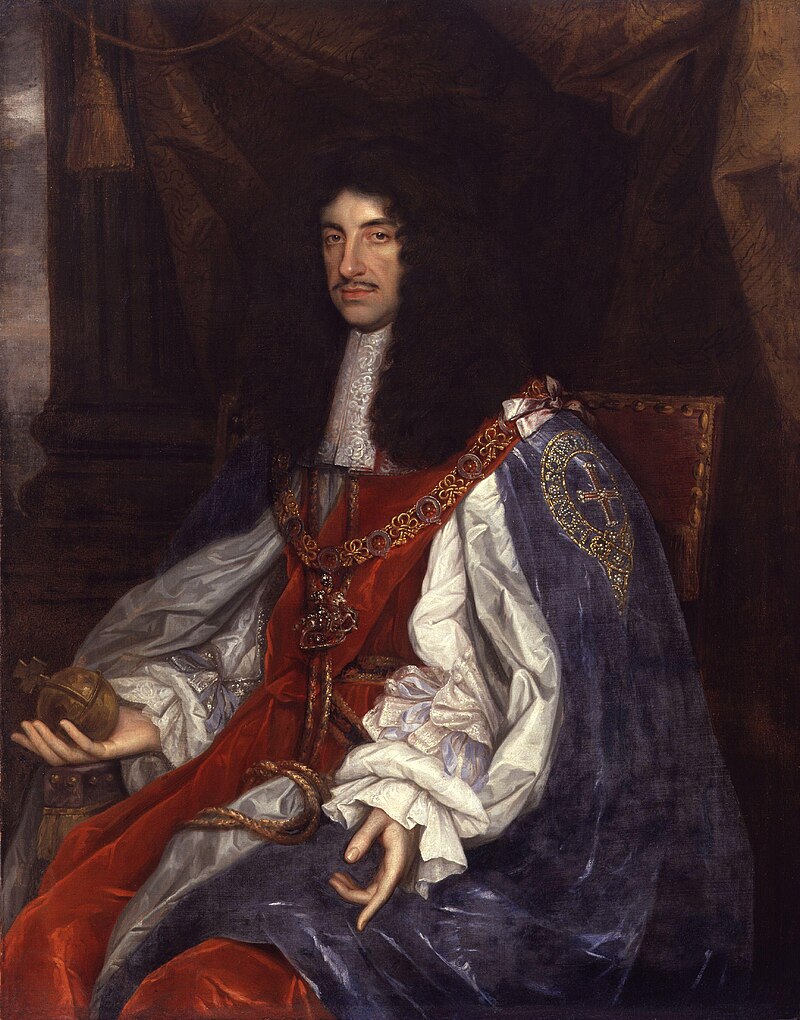
Charles II, King of England, King of Scots (1630 – 1685)

James II, King of England/James VII, King of Scots (1633 – 1701)
(All photos credits – Wikipedia unless otherwise noted)
Charles II and James II were the two eldest surviving sons of Charles I, King of England and King of Scots and Henrietta Maria of France. Their paternal grandparents were James I, King of Scots/James VI, King of Scots (the only child of Mary, Queen of Scots and her first cousin Henry Stuart, Lord Darnley) and Anne of Denmark (daughter of King Frederik II of Denmark and Sophie of Mecklenburg-Güstrow). Their maternal grandparents were King Henri IV of France and his second wife Marie de’ Medici.
After their father was executed during the English Civil War, Charles and James lived in France, where their mother already lived in exile with their youngest sister Henriette and where their first cousin King Louis XIV was on the French throne. They also spent time in The Hague in the Dutch Republic (now the Netherlands) their sister Mary, Princess Royal and Princess of Orange lived. After the death of Oliver Cromwell, his son Richard Cromwell ruled only for six months and there was a real possibility for the restoration of the monarchy after ten years. Parliament formally invited Charles, as King Charles II, to be the English monarch in what has become known as the Restoration.
Charles II married Catherine of Braganza, daughter of King João IV of Portugal but their marriage remained childless. Charles had at least fourteen illegitimate children whom he ennobled and officially recognized and through these children, he is the ancestor of many British aristocrats and of several women who married into the British Royal Family – Princess Alice, Duchess of Gloucester; Diana, Princess of Wales; Sarah, Duchess of York; and Camilla, Duchess of Cornwall.
Charles II was succeeded by his younger brother James who had converted to Catholicism and was unpopular. James had married twice and both his wives gave birth to quite a number of children, most who died in infancy or early childhood. From James’ first marriage to Anne Hyde, only the future Queen Mary II and Queen Anne survived. James’ second wife Maria Beatrice of Modena was childless. She had ten pregnancies and gave birth to five live children, all of whom died young. England might very well have tolerated King James II knowing that his heirs were the Protestant daughters of his first wife Anne Hyde, Mary and Anne. However, on June 10, 1688, Maria Beatrice gave birth to a son James Francis Edward. Immediately, false rumors swirled that the infant had been smuggled into the queen’s chambers in a warming pan.
Eventually, King James II was overthrown in the Glorious Revolution and lived out the rest of his life in France. Parliament offered the throne to James’ elder daughter Mary and her first cousin and husband William III, Prince of Orange. William was the only child of James II’s sister Mary, Princess Royal and was third in the line of succession to the throne after Mary and her sister Anne. William and Mary reigned jointly as Queen Mary II and King William III.
James, his wife, and his son settled at the Palace of St. Germain-en-Laye near Paris, France where a court in exile was established. After James II lost his throne, the Jacobite (from Jacobus, the Latin for James) movement formed. The goal of the Jacobites was to restore the Roman Catholic Stuart King James II of England/VII of Scotland and his heirs to the thrones of England and Scotland. James was determined to regain the throne and landed in Ireland with a French force but he was defeated by his nephew William at the Battle of the Boyne and was forced to withdraw once again to France. James spent the rest of his life in France, planning invasions that never happened. While in exile, Maria Beatrice gave birth to a daughter Louisa Maria Teresa.
Charles II and James II shared their first cousins with their siblings: Mary, Princess Royal; Princess Elizabeth; Princess Anne; Prince Henry, Duke of Gloucester; and Princess Henrietta.
- Unofficial Royalty: Charles II, King of England, King of Scots
- Unofficial Royalty: James II, King of England/James VII, King of Scots
********************
Paternal Aunts and Uncles: Children of James I, King of England/James VI, King of Scots and Anne of Denmark
- Henry Frederick, Prince of Wales (1594 – 1612), unmarried, died of typhoid fever, aged 18
- Elizabeth Stuart (1596 – 1662), married Friedrich V, Elector Palatine of the Rhine, had seven sons and six daughters including Sophia of Hanover who became heiress presumptive to the British throne under the Act of Settlement 1701; Sophia’s son was King George I of Great Britain
- Margaret Stuart (1598 – 1600), died aged fifteen months
- Robert, Duke of Kintyre (born and died 1602), died aged four months
- Mary Stuart (1605 – 1607), died aged two
- Sophia Stuart (born and died 1606), lived only one day
********************
Maternal Aunts and Uncles: Children of King Henri IV of France and his second wife Marie de’ Medici
- King Louis XIII of France (1601 – 1643), married Anne of Austria, had two sons including King Louis XIV of France
- Elisabeth of France, Queen of Spain (1602 – 1644), married King Felipe IV of Spain, had six daughters and two sons
- Christine Marie of France, Duchess of Savoy (1606 – 1663), married Vittorio Amadeo I, Duke of Savoy, had three sons and four daughters
- Nicolas Henri, Duke of Orléans, (1607 – 1611), died in childhood
- Gaston of France, Duke of Orléans (1608 – 1660), married (1) Marie de Bourbon, Duchess of Montpensier, had one daughter (2) Marguerite of Lorraine, had four daughters and one son
********************
PATERNAL FIRST COUSINS
Paternal First Cousins: Children of Elizabeth Stuart, Electress Palatine of the Rhine and Friedrich V, Elector Palatine of the Rhine

Heinrich Friedrich, Hereditary Prince of the Palatinate (1614 – 1629)
When Heinrich Friedrich was 15-years-old, he was traveling with his father aboard a ship from The Hague to Amsterdam to see the treasures of the Silver Fleet. The Silver Fleet was an annual convoy of ships that brought valuables from the Spanish colonies in the Americas to Spain. In 1628, Piet Hein, a Dutch lieutenant admiral and West Indian Company commander, hijacked the Silver Fleet and brought the treasures to Amsterdam. During the voyage from The Hague to Amsterdam, there was a strong storm, the ship sank and four people died including Heinrich Friedrich.
********************

Karl I Ludwig, Elector of the Palatinate of the Rhine (1617 – 1680)
Karl Ludwig’s father Friedrich V, Elector of the Palatinate had been elected King of Bohemia but the crown of Bohemia had been in Habsburg hands for a long time and the Habsburg heir, Ferdinand II, Holy Roman Emperor refused to accept Friedrich as King of Bohemia. Friedrich not only lost the Kingdom of Bohemia but also the Electorate of the Palatinate. After Friedrich’s early death at the age of 36, Karl Ludwig’s mother Elizabeth decided to fight for the rights of her eldest son Karl Ludwig. She raised a small army on his behalf, and finally, the Palatinate was restored to him. Karl Ludwig married three times. With his first wife was Charlotte of Hesse-Kassel, he had two sons and one daughter including his successor Karl II and Elisabeth Charlotte nicknamed Lieselotte who was the second wife of Philippe I, Duke of Orléans, the younger brother of King Louis XIV of France. Karl Ludwig then made two morganatic marriages: with Marie Luise von Degenfeld, he had eight sons and five daughters and with Elisabeth Hollander von Bernau, he had one son.
********************
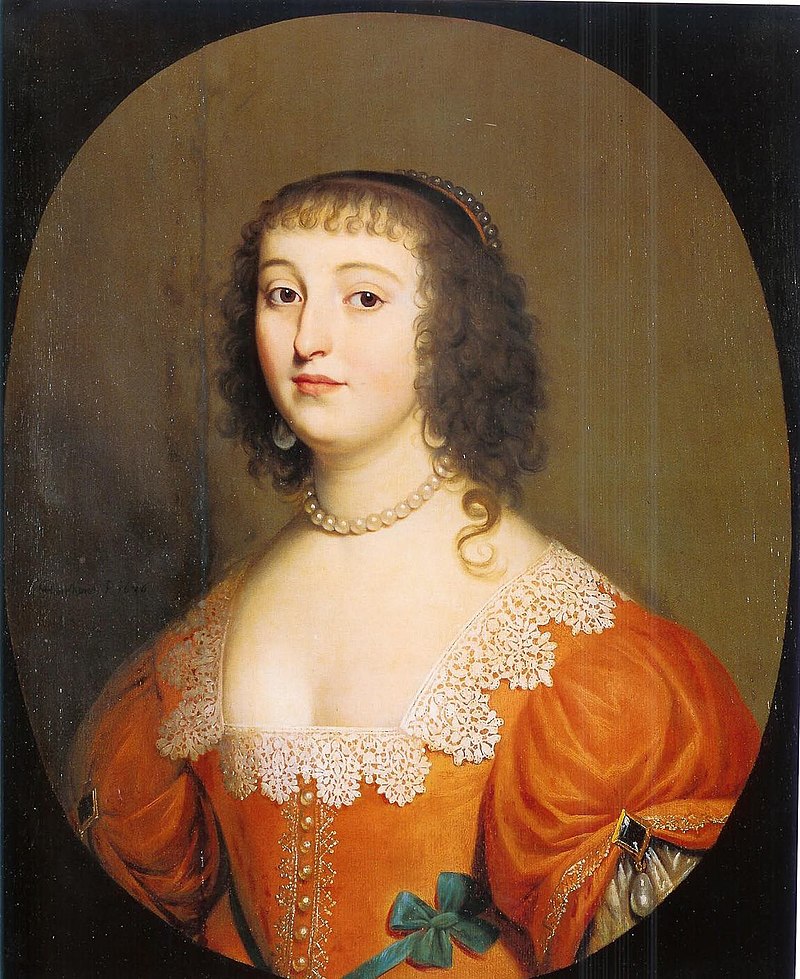
Elisabeth of the Palatinate, Princess-Abbess of Herford Abbey (1618 – 1680)
Elisabeth was extremely well-educated and throughout her life, she corresponded with many intellectuals including French mathematician and philosopher René Descartes. She never married and entered the Protestant Hereford Abbey in the Duchy of Saxony. She eventually became the Abbess.
********************
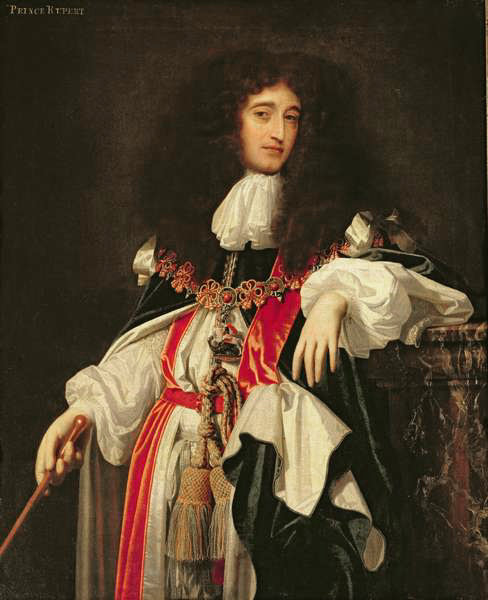
Prince Rupert of the Rhine, Duke of Cumberland (1619 – 1682)
Rupert had a long military career and fought in the Thirty Years War and in the English Civil War in support of first, his uncle King Charles I and then his first cousin King Charles II. After the restoration of the English monarchy, served as private secretary to King Charles II and took care of naval affairs. He held various naval commands, was appointed Admiral and eventually became, Lord High Admiral, the head of the Royal Navy. Rupert never married but he did have an illegitimate son and daughter. He died in London and was buried at Westminster Abbey.
********************

Prince Maurice of the Palatinate (1620 – 1652)
Maurice also served with his brother Rupert in support of their uncle King Charles I and then their first cousin King Charles II. He was created Vice Admiral of the Fleet. While sailing to the Virgin Islands in the West Indies, his fleet was caught in a hurricane and Maurice went down with his ship.
********************

Princess Louise Hollandine of the Palatinate (1622 – 1709)
Louise Hollandine was a very talented portrait painter. During the English Civil War, she went to France to be with her aunt Henrietta Maria, the widow of her uncle, the beheaded King Charles I. There Louise Hollandine converted to Roman Catholicism, to the horror of her mother. She became a nun at the Cistercian Maubuisson Abbey, and later, became the abbess. Louise Hollandine suffered a stroke and was paralyzed for the last few years of her life.
********************
Prince Louis of the Palatinate (born and died 1624)
********************

Edward, Count Palatine of Simmern (1625 – 1663)
Due to their differences in religion, Edward married Anna Gonzaga, a French noblewoman from an Italian background, in secret. Not wanting to cause any issues, Edward converted to Roman Catholicism despite his mother’s threats to disown any of her children who converted. The couple had three daughters lived in Paris and were supported by King Louis XIV of France. Edward eventually reconciled with his mother.
********************

Princess Henriette Marie of the Palatinate, Countess of Mongatsch (1626 – 1651)
Henriette Marie married Sigismund Rákóczi, Count of Mongatsch, son of George I Rákóczi, Prince of Transylvania. A few months after the marriage, Henriette died suddenly at the age of 25 and her husband died a few months later.
********************

Prince Philip Friedrich of the Palatinate (1627 – 1650)
Philip Friedrich was educated at the French court and then went to live with his mother at The Hague. During a duel or a fight, Philip killed Lieutenant Colonel Jacques de l’Epinay, a favorite of his mother, and then fled, refusing to submit to the Dutch authorities. His mother never spoke to him again and refused to recognize him as her son. Philip entered the military service of the Duke of Lorraine and was killed at the Battle of Rethel during the Fronde.
********************
Princess Charlotte of the Palatinate (1628 – 1631), died in childhood
********************

Sophia of the Palatinate, Electress of Hanover (1630–1714)
If the Stuarts had been able to provide a Protestant heir to the British throne, Sophia, Electress of Hanover would not have become possibly the most famous footnote in British royal history. Sophia married Ernst August, Elector of Hanover had six sons and one daughter including King George I of Great Britain. Sophia’s birth family was the most junior of the Stuart lines but was the most Protestant. In 1701, Parliament passed the Act of Settlement, giving the succession to the British throne to Sophia and her non-Catholic heirs. This act ensured the Protestant succession and bypassed many Catholics who had a better hereditary claim to the throne. Sophia narrowly missed becoming queen, having died two months before Queen Anne. Sophia’s son George, Elector of Hanover became King George I.
********************

Gustavus with his eldest sister Elizabeth
Prince Gustavus Adolphus of the Palatinate (1632 – 1641)
Gustavus died of epilepsy at the age of eight.
********************
MATERNAL FIRST COUSINS
Maternal First Cousins: Children of King Louis XIII of France and Anne of Austria

King Louis XIV of France (1638 – 1715)
Louis became King of France at age four and is the longest-reigning French monarch, reigning for 72 years. His first wife was his first cousin twice over, Maria Theresa of Spain. They had six children but only one survived childhood. He had several mistresses and a number of illegitimate children. After the death of Maria Theresa, Louis made a morganatic marriage with Françoise d’Aubigné, Madame Scarron (later created Marquise de Maintenon). Because the marriage was morganatic, she was never publicly acknowledged as his wife or as queen.
Louis was an ardent believer in the divine right of kings, assumed full control of the monarchy, and went on to become one of France’s most powerful sovereigns, and establishing France as one of the leading powers of Europe. Perhaps Louis’ best-known building project was the Palace of Versailles. Having inherited the hunting lodge built there by his father, Louis oversaw several building campaigns which resulted in the magnificent palace which still stands today. Louis XIV survived his surviving son and his son’s eldest son. He was succeeded by his five-year-old great-grandson who reigned as King Louis XV.
********************

Philippe I, Duke of Orléans (1640 – 1701)
Philippe married his first cousin Henrietta of England, daughter of the beheaded King Charles I and Philippe’s aunt Henrietta Maria of France. Philippe had homosexual affairs but apparently, he was intent on fulfilling his dynastic responsibility of having children. Philippe and Henrietta had two daughters and one son. Henrietta died at the age of 26 amid rumors that she had been poisoned. As Philippe’s only son had died, Louis XIV wanted his brother to marry again to provide a male heir to continue the Orléans line.
Philippe married another first cousin, the Protestant Princess Elizabeth Charlotte of the Palatinate, known as Liselotte. She was the only daughter of Karl I Ludwig, Elector Palatine and Charlotte of Hesse-Kassel. Liselotte’s paternal grandmother was Elizabeth Stuart, daughter of King James I of England and granddaughter of Mary, Queen of Scots. Liselotte converted to Roman Catholicism and produced two sons and one daughter. Through their daughter, Philippe and Liselotte were the grandparents of Marie Antoinette, Queen of France. Philippe’s careful investment and management of his various estates made him a wealthy man and his wealth was greatly increased when he inherited the fortune of his extremely wealthy paternal first cousin Anne Marie Louise of Orléans, Duchess of Montpensier. Philippe is acknowledged as being not only the biological founder of the House of Orléans but as its financial founder
********************
Maternal First Cousins: Children of Elisabeth of France, Queen of Spain and King Felipe IV of Spain
Maria Margarita of Austria, Infanta of Spain (born and died 1621)
********************
Margarita Maria Caterina of Austria, Infanta of Spain (born and died 1623)
********************
Maria Eugenia of Austria, Infanta of Spain (1625 – 1627)
********************
Isabella Maria Theresa of Austria, Infanta of Spain (born and died 1627)
********************
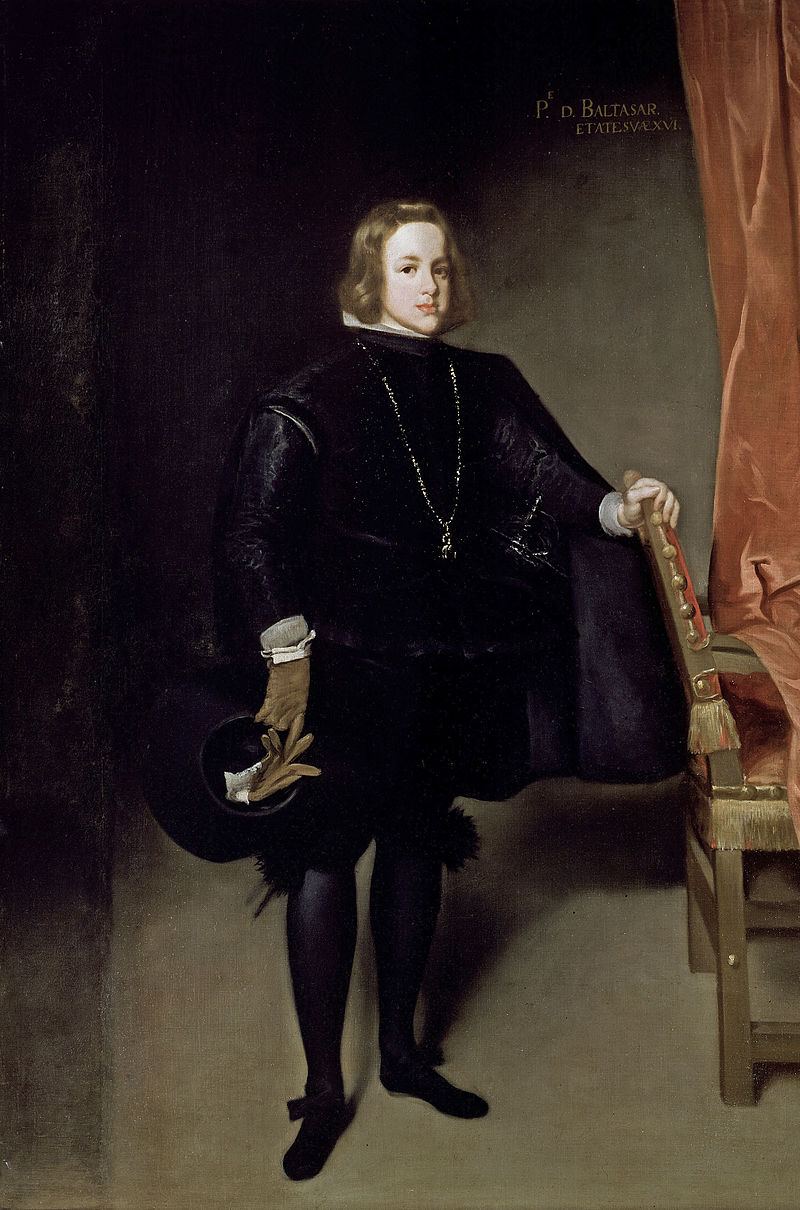
Baltasar Carlos of Austria, Infante of Spain, Prince of Asturias (1629 – 1646)
The only son of King Felipe IV of France and his first wife Elisabeth of France, Baltasar was his father’s heir apparent until his death from smallpox at age 16. He was buried at the Monastery of San Lorenzo de El Escorial in Spain.
********************
Francisco Fernando of Austria, Infante of Spain (born and died 1634)
********************
Infanta Maria Ana “Mariana” Antonia of Austria, Infanta of Spain (born and died 1636)
********************

Maria Theresa of Austria, Infanta of Spain, Queen of France (1638–1683)
The youngest of eight children, Maria Theresa was the only one of her siblings to reach adulthood. As Spain allowed for females to ascend the throne, Maria Theresa was heiress-presumptive to the Spanish throne between the death of her elder brother Balthasar Charles and the birth of her younger half-brother Felipe Próspero. She was again heiress-presumptive following Felipe Próspero’s death and the birth of the future King Carlos II. As part of the Treaty of the Pyrenees of which ended the Franco-Spanish War, Maria Theresa was betrothed to King Louis XIV of France. Maria Theresa and Louis were first cousins twice over – his father and her mother were siblings, and his mother and her father were siblings.) She was forced to renounce any rights to the Spanish throne and was to receive a large financial settlement in exchange. The couple They had three sons and three daughters. Only their eldest son reached adulthood but he predeceased his father.
********************
Maternal First Cousins: Children of Christine Marie of France, Duchess of Savoy and Vittorio Amadeo I, Duke of Savoy
Prince Luigi Amadeo of Savoy (1622 – 1628), died in childhood
********************

Princess Luisa Cristina of Savoy (1629 – 1692)
Due to a regency dispute when two of her brothers succeeded to the Dukedom of Savoy, 13-year-old Luisa Cristina married her 49-year-old paternal uncle Prince Maurice of Savoy as a reconciliation measure. Maurice had been a Cardinal of the Roman Catholic Church but received papal permission to leave the priesthood to marry his niece. Luisa Christina and Maurice had no children.
********************
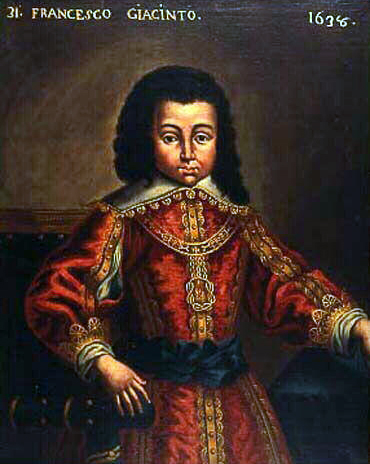
Francesco Giacinto, Duke of Savoy (1632 – 1638)
Francesco Giacinto became Duke of Savoy when he was five-years-old, following the death of his father. His mother acted as regent. A year later, he died from a fever.
********************

Carlo Emanuele II, Duke of Savoy (1634 – 1675)
Four-year-old Carlo Emanuele succeeded his six-year-old brother Francesco Giacinto as Duke of Savoy. His mother served as regent and even after Carlo Emanuele reached adulthood, he allowed his mother to continue ruling. He assumed power only after the death of his mother. He married his first cousin Françoise Madeleine d’Orléans, daughter of his maternal uncle Gaston, Duke of Orléans. They had no children and Françoise Madeleine died the year after their marriage. Carlo Emanuele’s second wife was another first cousin, Marie Jeanne Baptiste of Savoy-Nemours. The couple had one son who succeeded his father as Vittorio Amadeo II, Duke of Savoy.
********************

Princess Margherita Violante of Savoy, Duchess of Parma (1635 – 1663)
Once considered a bride for her first cousin King Louis XIV of France, Margherita Violante married Ranuccio II Farnese, Duke of Parma. The couple had a stillborn daughter and a son who died the day of his birth as did Margherita Violante.
********************

Princess Enrichetta Adelaide of Savoy, Electress of Bavaria (1636 – 1676)
Enrichetta Adelaide was the twin of Caterina Beatrice who died in infancy. She married Ferdinand Maria, Elector of Bavaria and had four daughters and three sons. Through her eldest daughter, Enrichetta Adelaide is an ancestor of the Spanish royal family. Enrichetta Adelaide and her husband built the Nymphenburg Palace in Munich, which became the summer palace of the Bavarian royals. They also built the Theatine Church of St. Cajetan in Munich in thanksgiving for the birth of their long-awaited heir Prince Maximilan II Emanuel.
********************
Princess Caterina Beatrice of Savoy (1636 – 1637), died in infancy
********************
Maternal First Cousins: Child of Gaston of France, Duke of Orléans and his first wife Marie de Bourbon, Duchess of Montpensier

Anne Marie Louise of Orléans, Duchess of Montpensier, La Grande Mademoiselle (1627 – 1693)
Anne Marie Louise’s mother was the immensely wealthy Marie de Bourbon, Duchess of Montpensier in her own right. Four days after Anne Marie Louise’s birth, her mother died due to childbirth complications and her infant daughter inherited her fortune and titles. Anne Marie Louise was not only the wealthiest woman in France but also the second-highest ranked woman after the queen. When Anne Marie Louise died, her fortune was handed over to her cousin Philippe I, Duke of Orléans, King Louis XIV’s only sibling.
********************
Maternal First Cousins: Children of Gaston of France, Duke of Orléans and his second wife Marguerite of Lorraine

Marguerite Louise of Orléans, Grand Duchess of Tuscany (1645 – 1721)
Marguerite Louise married Cosimo III de’ Medici, Grand Duke of Tuscany and had two sons and one daughter. The couple did not get along. After their first child, a son, was born they lived separately with Marguerite Louise constantly complaining to her cousin King Louis XIV of France. The couple reconciled for a period of several years. However, when her mother died, Marguerite Louise asked Louis XIV for permission to leave her husband and settle in France. Three years later, Louis XIV but confined his cousin to the Abbey of Saint Peter at Montmartre in Paris, which housed the noble ladies separated from their husbands. Previous abbesses had tolerated Marguerite Louise’s behavior but a new abbess complained to Louis XIV and Marguerite Louise was moved to a different convent. Eventually, Marguerite Louise was able to buy a house in Paris at 15 Place des Vosges, where she spent her final years.
********************
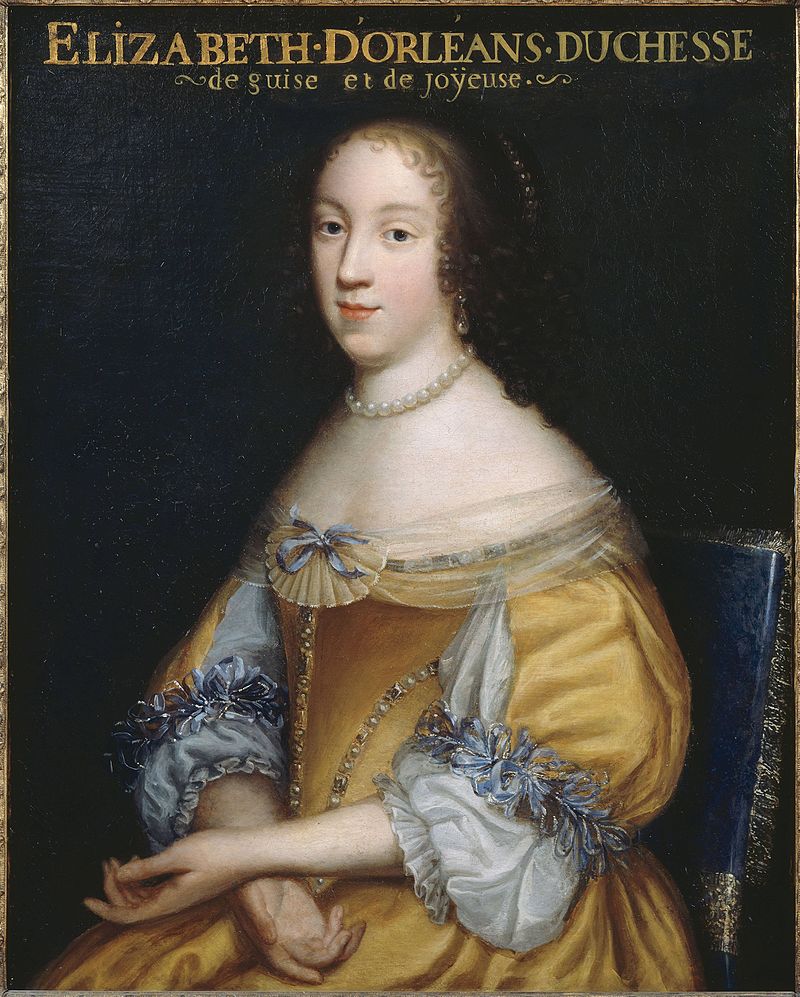
Élisabeth Marguerite of Orléans, Duchess of Guise (1646 – 1696)
Élisabeth Marguerite married Louis Joseph of Lorraine, Duke of Guise. Louis Joseph was only 17, four years younger than Élisabeth Marguerite who outranked him as a petite-fille de France (“Granddaughter of France”) and considered him a social inferior. Louis Joseph died from smallpox four years after their marriage. The couple did manage to produce one son but he was quite sickly. Still unable to walk unaided at age four, he was dropped by his nurse and died from a head injury. Élisabeth Marguerite never married again. She lived in her various homes, sometimes stayed at the Abbey of Saint Peter at Montmartre with her sister Marguerite Louise and was often at the court of her cousin Louis XIV.
********************

Françoise Madeleine of Orléans, Duchess of Savoy (1648 – 1664)
Françoise Madeleine was the first wife of her first cousin Carlo Emanuele II, Duke of Savoy. They married in April 1663 and nine months later 15-year-old Françoise Madeleine died. Her husband was inconsolable at her death and gave her a lavish funeral.
********************
Jean Gaston of Orléans, Duke of Valois (1650 – 1652)
Jean Gaston was the only son of Gaston, Duke of Orléans. His birth was greatly celebrated by his wealthy and much older half-sister Anne Marie Louise who ordered a large fireworks display in Paris to celebrate his birth. Jean Gaston was always in frail health. He was never able to walk, could not speak, and had a leg deformity. He died when he was two-years-old.
Wikipedia: Jean Gaston of Orléans, Duke of Valois
********************
Marie Anne of Orléans (1652 – 1656), died in childhood
********************
This article is the intellectual property of Unofficial Royalty and is NOT TO BE COPIED, EDITED, OR POSTED IN ANY FORM ON ANOTHER WEBSITE under any circumstances. It is permissible to use a link that directs to Unofficial Royalty.
Works Cited
-
- Lundy, D. (2019). Main Page. [online] Thepeerage.com. Available at: http://www.thepeerage.com/. (for genealogy information)
- Unofficial Royalty. (2019). Unofficial Royalty. [online] Available at: https://www.unofficialroyalty.com. (for biographical and genealogy information)
- Wikipedia. (2019). Main Page. [online] Available at: https://en.wikipedia.org/. (for biographical and genealogy information)
